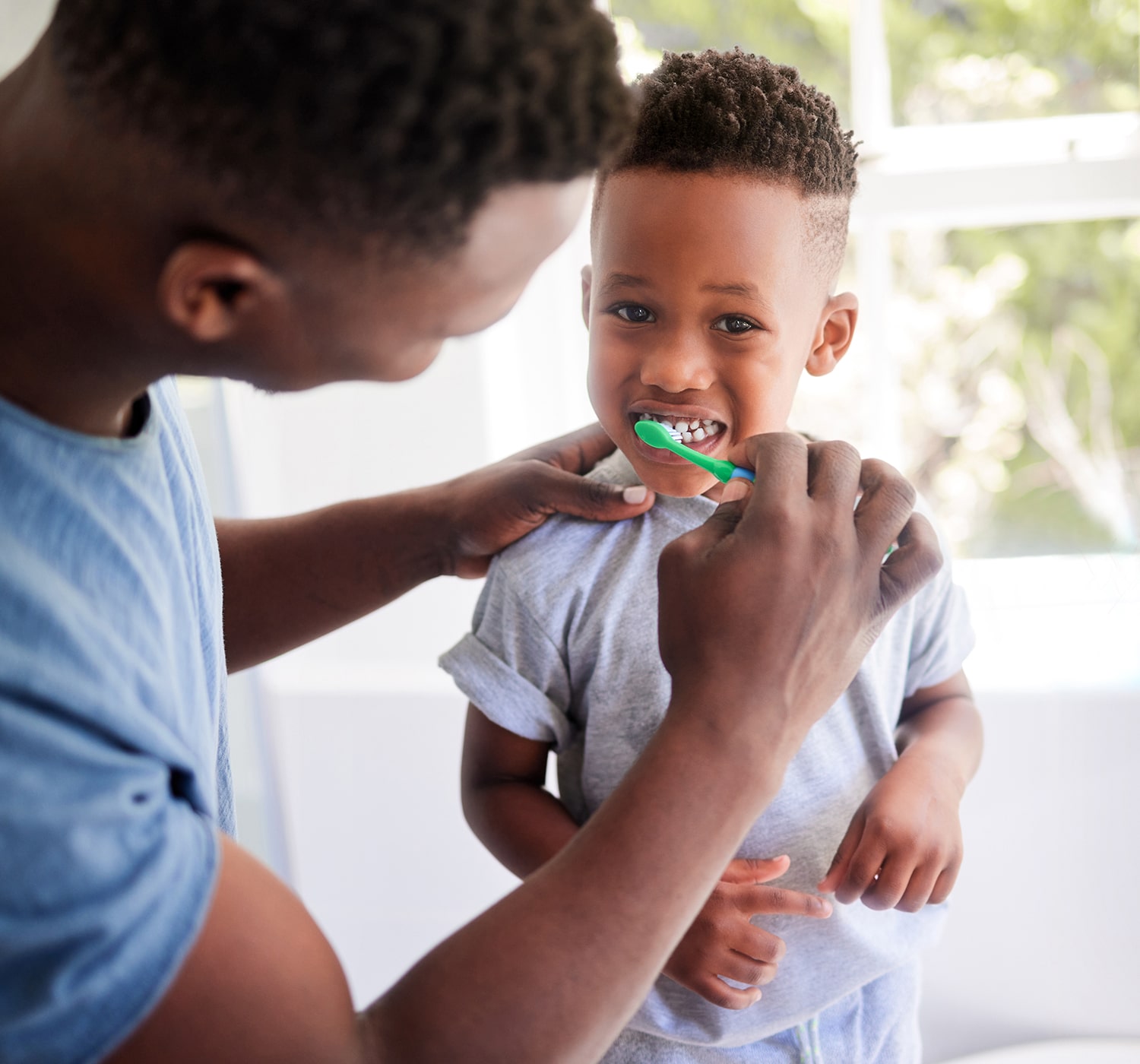Gentle Relief for Tongue-Tie and Lip-Tie
A frenectomy is a simple procedure that releases a tight or restrictive band of tissue in the mouth. At Family Smile Centers in St. Charles County, this treatment can improve tongue or lip mobility, helping restore essential oral functions like feeding, speech, and proper tooth alignment. Our laser-based treatment minimizes discomfort and often requires no stitches or sedation, making it a safe and family-friendly dental option. Whether you’re a parent concerned about your baby’s latch or an adult struggling with restricted tongue movement, we’re here to help you understand your options.
What Is a Tongue-Tie or Lip-Tie?
Tongue tie (also called ankyloglossia) occurs when the tissue connecting the underside of the tongue to the floor of the mouth—the lingual frenum—is too short, thick, or tight. This restricts normal tongue movement and can lead to nursing, eating, and speaking issues.
A lip-tie refers to the labial frenum, which connects the upper lip to the gum tissue above the front teeth. When this tissue is tight or overextended, it can interfere with a baby’s ability to form a good seal when feeding. It may contribute to spacing between the front teeth or gum irritation later in life.
Both conditions are more common than many people realize, and when treated early, they can significantly impact function and development.

Signs A Frenectomy May Be Needed
Frenum restrictions can show up differently depending on the patient’s age. Awareness of the signs allows families and individuals to take proactive steps toward evaluation and treatment.
In Infants
Early signs are often linked to feeding challenges. If a baby is struggling to latch or feed properly, it’s worth evaluating the possibility of a tongue- or lip-tie.
- Difficulty latching or staying latched during breastfeeding
- Excessive gas or fussiness after feeding
- Clicking sounds while nursing or bottle feeding
- Poor weight gain or frequent feeding sessions
- Painful nursing experience for the mother

In Children
As children grow, restrictions in tongue or lip movement may begin to affect their ability to eat, speak, or maintain good oral hygiene.
- Speech delays or difficulty with certain sounds
- Limited tongue range of motion (e.g., can’t stick tongue out past lips)
- Difficulty chewing or swallowing certain foods
- Gagging or choking on food
- Spacing between front teeth (often linked to lip-tie)
In Teens and Adults
Undiagnosed ties may continue to affect daily function or oral health into adulthood.
- Speech fatigue or difficulty with enunciation
- Jaw tension or TMJ-like symptoms
- Gum recession near the upper front teeth
- Challenges with flossing or cleaning teeth
- Discomfort with oral appliances (e.g., retainers, dentures)
In many cases, a quick evaluation can determine whether a simple frenectomy may resolve these issues or improve quality of life.

Why We Use Laser Technology for Frenectomies
At Family Smile Centers in St. Charles County, we use the DEKA CO₂ laser for frenectomy procedures. Unlike traditional surgical methods that may involve a scalpel or scissors, the laser allows us to perform the release with exceptional accuracy and control. The laser cauterizes as it works, which significantly reduces bleeding, eliminates the need for sutures, and speeds healing. Many patients report minimal discomfort and return to normal activity the same day.
Benefits of Laser Frenectomy
Laser treatment offers several distinct advantages over conventional methods:
- Less discomfort during and after the procedure
- Minimal to no bleeding
- No need for sutures or surgical dressings
- Faster healing and reduced inflammation
- Shorter procedure time
- Greater precision in targeting only the restrictive tissue
This technology is especially helpful for infants and young children, who benefit from a fast, gentle experience with fewer side effects.


What to Expect During the Procedure
Every patient’s experience is slightly different, but the frenectomy process is generally quick and straightforward. The procedure takes only a few minutes, and most patients recover comfortably at home with minimal care.
During your consultation, we will:
- Examine the area visually and functionally
- Review symptoms and history
- Explain the recommended treatment and answer questions
- Discuss post-treatment care instructions
- Schedule the laser release procedure, which may be done the same day
We may recommend feeding infants immediately after the procedure to help comfort and stimulate function. Children and adults can typically return to their normal routine within a day.
Or Call (636) 757-1800
Post-Procedure Care and Recovery
Proper aftercare is essential to healing and preventing tissue reattachment. We’ll provide age-appropriate guidance and show you any necessary exercises to support healing.
For infants, this may include:
- Gentle stretches or massage of the release site
- Feeding support and coordination with a lactation consultant if needed
For older children and adults:
- Oral stretching exercises to promote tissue mobility
- Mild over-the-counter pain relief if recommended
- Avoiding spicy or crunchy foods for a day or two
Most patients experience only minor discomfort; complete healing typically occurs within one to two weeks.







A Multidisciplinary Approach to Care
Frenectomy treatment is often part of a broader care plan. We collaborate with referring pediatricians, lactation consultants, speech-language pathologists, and orthodontists to provide comprehensive support before and after treatment—addressing feeding, speech development, airway function, and oral hygiene. If you or your child are struggling with feeding, speech, or oral movement, a gentle laser frenectomy may offer a safe, effective solution. Schedule a frenectomy evaluation; we’ll answer your questions, help you decide if this treatment is right for your family, and guide you through every step with compassion and expertise.
Or Call (636) 757-1800
Helpful Tips & Info
Patient Education Articles
The Ultimate Guide to Preventive Dental Care for Families
Preventive dental care is the foundation of a healthy smile. Families in St. Peters, [...]
Fixed Implant Bridges vs. Implant Overdentures
If you are missing most or all of your teeth, dental implants can restore [...]
Clear Aligners vs. Traditional Braces: Which Orthodontic Treatment Is Right for You?
Choosing the right orthodontic treatment is an important step toward achieving a healthier, more [...]












